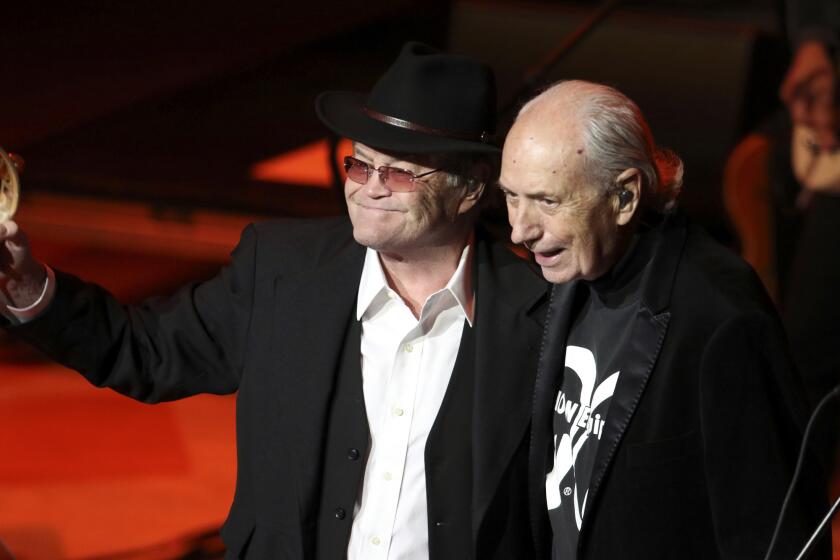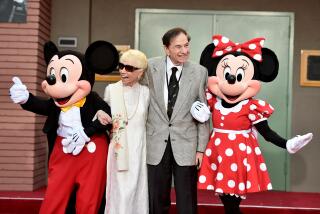Monkees singer-songwriter Michael Nesmith dies at 78
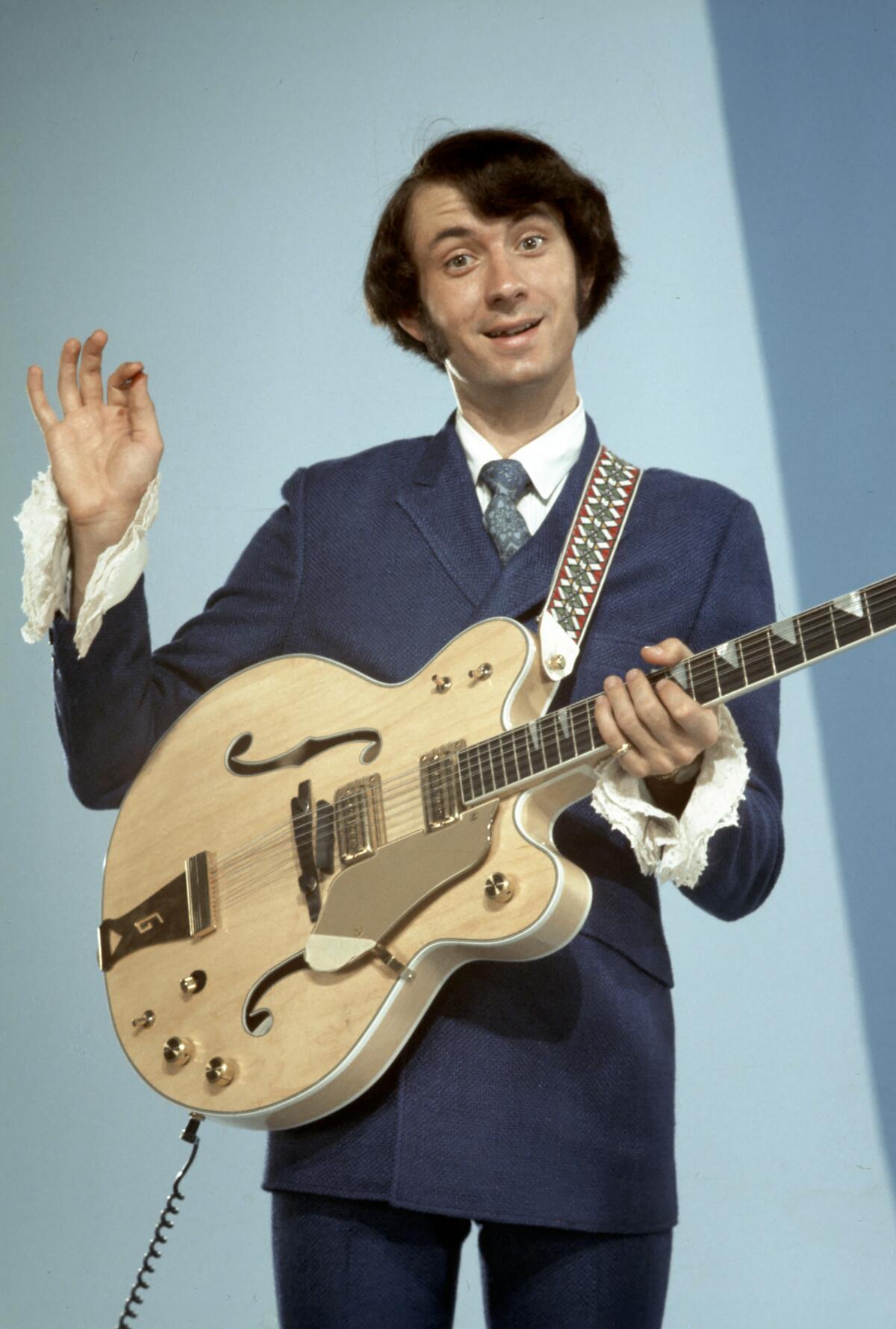
Michael Nesmith, the singer-songwriter who was the creative heart of the 1960s pop group the Monkees, died of heart failure at his home in Carmel Valley, Calif., on Friday. He was 78.
“With infinite love we announce that Michael Nesmith has passed away this morning in his home, surrounded by family, peacefully and of natural causes,” his family said in a statement to Rolling Stone.
Nesmith came to stardom when he was cast as a member of the Monkees, a made-for-television rock ‘n’ roll group masterminded by Bob Rafelson and Don Kirshner. The Monkees became one of the most successful rock bands of the 1960s, selling more than 75 million records worldwide and topping the charts with “Last Train to Clarksville,” “I’m a Believer” and “Daydream Believer.”
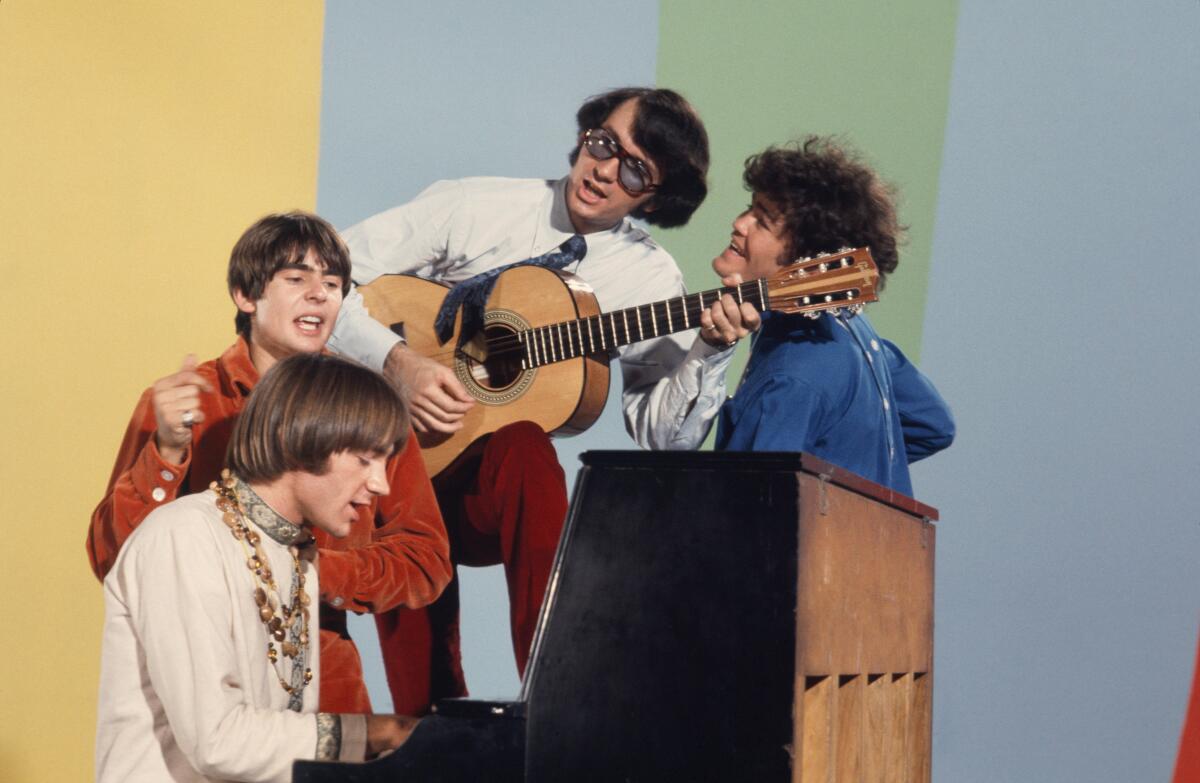
Despite their success, Nesmith bristled at the notion that the group was a creation of the producers and steered the Monkees away from their prefabricated origins, pushing the band’s record label to let the group play their own instruments on “Headquarters,” their third album. Nesmith was the only member of the Monkees to write original material on a regular basis, with “Mary, Mary,” “You Just May Be the One” and “The Girl I Knew Somewhere” among his signature tunes for the band. He achieved success as a songwriter outside of the group as well, when Linda Ronstadt’s Stone Poneys had a hit with his “Different Drum” in 1967.
By that point, the wool-capped guitarist started introducing elements of country music into the Monkees, a musical direction he’d continue to pursue after he left the band in 1970. He formed the First National Band, one of the first country-rock bands to achieve commercial success, but he wound up spending most of his career operating on the fringes of pop-rock music while working as a pioneer in home video.
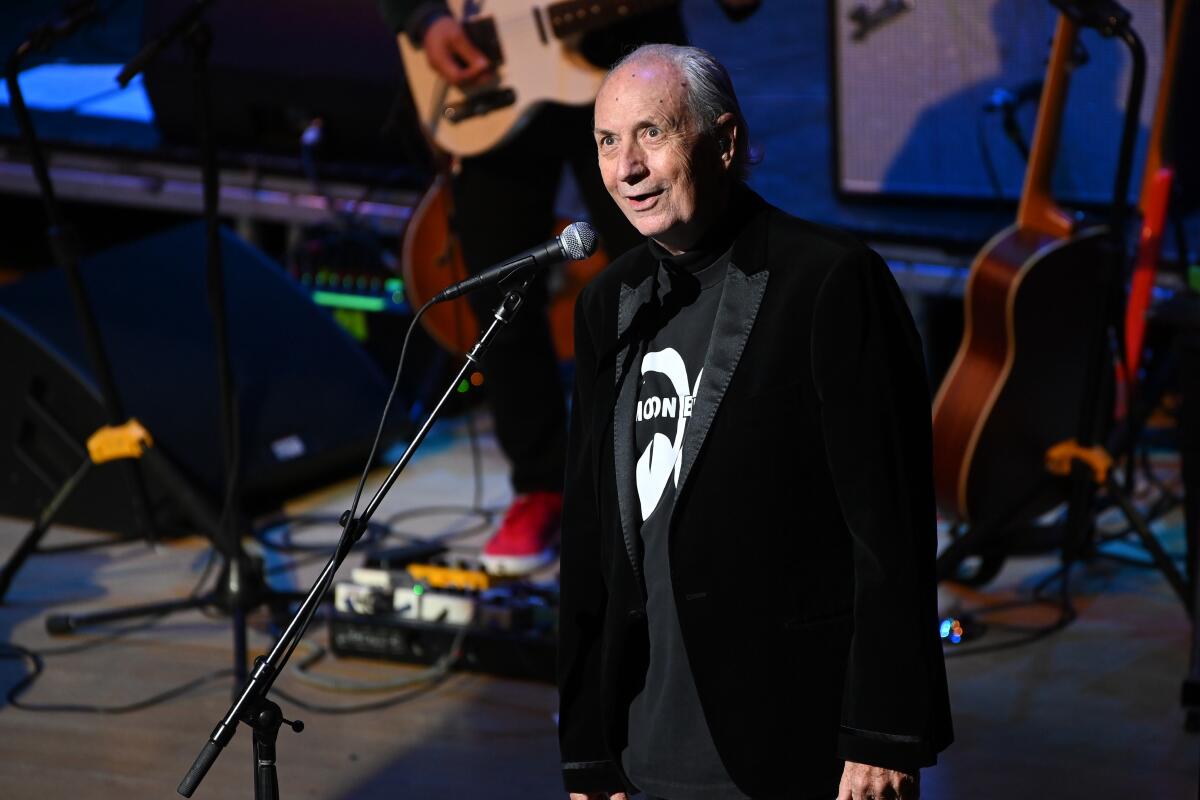
The only child of Warren and Bette Nesmith, Michael Nesmith was born in Houston on Dec. 30, 1942. His parents divorced when he was 4, and he stayed with his mother, who relocated to Dallas to be closer to family. While working as a secretary for Texas Bank and Trust in 1951, she developed Liquid Paper, a typewriter correction product; she sold the company to Gillette in 1979 for $48 million, a fortune her son would inherit after her death in 1980.
Michael Nesmith showed some interest in music and theater while attending Thomas Jefferson High School. He left school to join the Air Force in 1960, earning an honorable discharge in 1962. While attending San Antonio College, he began singing folk music with John Kuehne, who adopted the name John London by the time the pair headed to Los Angeles to attempt to break into the music business.
Nesmith released his first single, “Wanderin’,” in 1963. It didn’t garner much attention, nor did recordings he released in 1965 under the pseudonym Michael Blessing, but his songs started to find an audience through other performers. Frankie Laine cut Nesmith’s “Pretty Little Princess” in 1965, and the Paul Butterfield Blues Band recorded “Mary, Mary” on its groundbreaking 1966 LP, “East-West.”
Brian Wilson, Susanna Hoffs and Patton Oswalt are among the famous fans saluting the legacy of Michael Nesmith, the Monkees musician who died Friday.
Despite these achievements, Nesmith struggled to make ends meet, so he decided to audition for “The Monkees,” a television show that producers Bob Rafelson and Bert Schneider patterned after the Beatles’ comedic films. Each of the four members of the Monkees was chosen to fill a certain archetype. Nesmith was pegged to be the “serious” member of the Monkees, standing in contrast to the wacky Micky Dolenz, cute heartthrob Davy Jones and convivial Peter Tork. Nesmith didn’t lack humor: He was laconic and sardonic, qualities that served him well on screen.
The Monkees became a pop phenomenon after the television series debuted in September 1966. While the Nielsen ratings were solid, the group’s record sales were staggering. “The Monkees” and “More of the Monkees,” their first two LPs, topped the Billboard album charts for 31 consecutive weeks spanning 1966 and 1967, led by such hits as “Last Train to Clarksville,” “I’m a Believer” and “A Little Bit Me, A Little Bit You.”
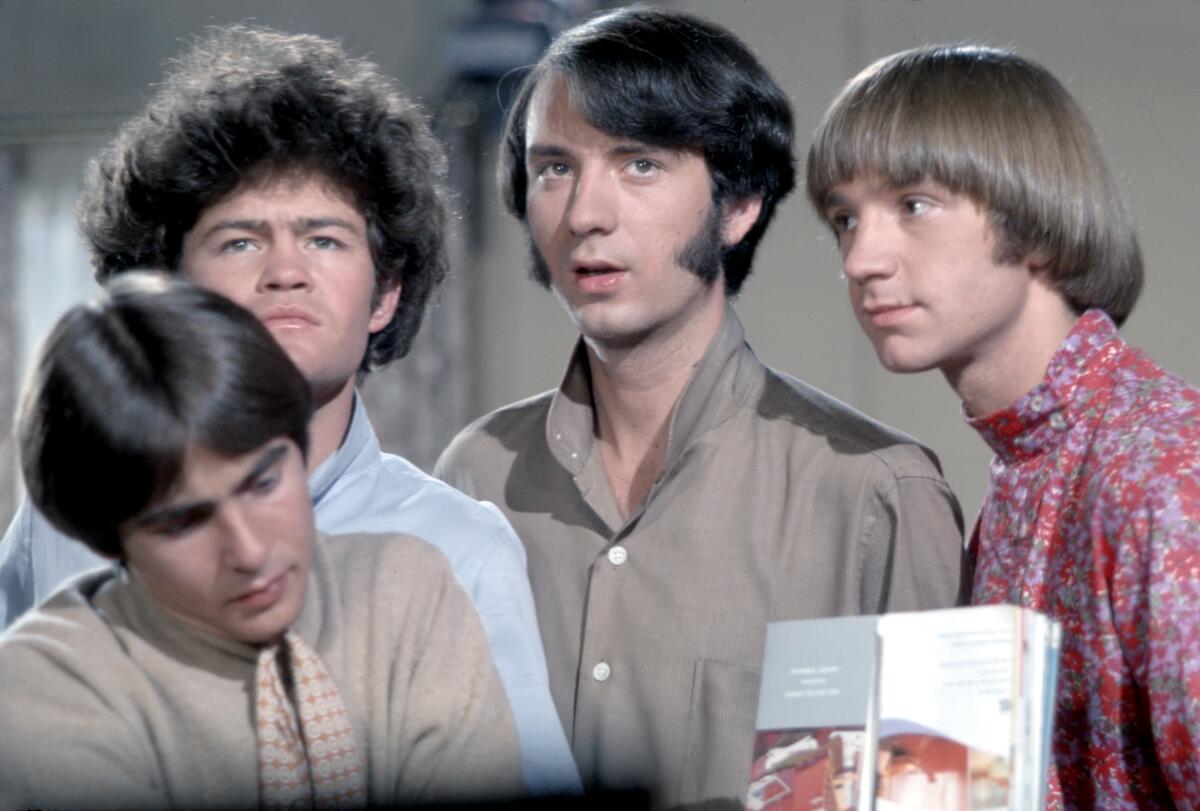
Although the Monkees played instruments on television, musical director Don Kirshner didn’t allow the group to play in the studio. Kirshner did agree to record original songs from Nesmith — he placed “Papa Gene’s Blues” on the debut, “Mary, Mary” (later sampled by Run-DMC) on “More of the Monkees” — but the songwriter soon grew frustrated not only at being creatively stifled but by the growing perception they were puppets of the producers. Nesmith rallied his bandmates to have a greater say in their music, and by the time the group recorded its third album, “Headquarters,” with producer Chip Douglas, Kirshner was no longer working with them.
“Headquarters” and its swift sequel, “Pisces, Aquarius, Capricorn & Jones Ltd.,” found the Monkees at their commercial and creative apex as they dabbled with psychedelia and nascent country-rock. The group may have been thriving on record — “The Birds, The Bees & The Monkees” generated hits in “Daydream Believer” and “Valleri” — but their television show was canceled after its second season wrapped in 1968. The Monkees made one more venture into visual arts, filming the trippy, postmodern comedy “Head” with director Rafelson and co-screenwriter Jack Nicholson, but the movie flopped, bolstering the notion that the Monkees were in commercial decline. Soon, Tork left the group, and Nesmith followed him after completing work on two Monkees albums in 1969.
Nesmith reunited with John Kuehne in the First National Band, a country-rock band in the vein of the Flying Burrito Brothers. The First National Band had a modest hit with “Joanne” on its 1970 debut, “Magnetic South,” the first of three albums the band released for RCA between 1970 and 1971. Nesmith carried on with a revised lineup he called the Second National Band, eventually becoming a solo act by the mid-1970s.

This transition coincided with his founding of the Pacific Arts Corporation in 1974. Initially intended as a way to release his ambitious “The Prison,” an album designed as “A Book With a Soundtrack,” Pacific Arts became Nesmith’s platform to experiment with music videos. He started with a short-form clip for his 1977 single “Rio,” and in 1981, he created the influential long-form video “Elephant Parts,” which intercut music and comedy sketches. “Elephant Parts” won the first Grammy Award for video in 1981. Nesmith’s Pacific Arts branched out into film production in the 1980s, producing such cult classics as “Repo Man” and “Tapeheads.”
After sitting out the Monkees 20th anniversary reunion tour, he returned to the fold for the 30th anniversary, recording the new album “Justus” in 1996. Nesmith would participate in most Monkees reunions for the rest of his life, including their final studio albums, “Good Times!” and “Christmas Party,” as well as the recent Monkees farewell tour. The last stop of the tour was L.A.’s Greek Theatre on Nov. 14, 2021.
Nesmith is survived by four children: Christian, Jonathan and Jessica, with ex-wife Phyllis Barbour Nesmith, and Jason, with Nurit Wilde.
More to Read
The biggest entertainment stories
Get our big stories about Hollywood, film, television, music, arts, culture and more right in your inbox as soon as they publish.
You may occasionally receive promotional content from the Los Angeles Times.
